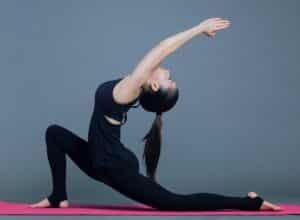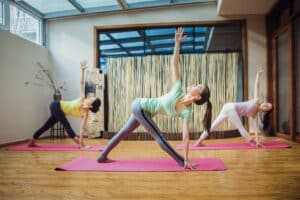While specific Pilates exercises are taught to beginners, nearly all of our workout routines can be tailored to a wide range of skill levels or repertoires. Customers and Pilates enthusiasts alike appreciate sessions that are scalable and, of course, less boring.
You might discover that changing moves or switching springs is simple here. Instead of limiting exercises based on skill level, let the exercises speak for themselves.
Read on as we discuss and learn more about Pilates reformer exercises and levels.
Understanding Every Pilates Reformer Level
Beginner Reformer
Beginner reformer exercises lay a solid foundation for future work. Beginning reformer exercises are also known as “essential exercises.” These exercises will help you get started with Pilates, introduce you to the fundamental repetitions, and build your mental and physical endurance through movement.
Reformer moves can be tailored to your specific requirements. Short Box Series is an excellent beginner block. This section can be made more interesting by including twists, poles, limbs, leans, and spinal/posture changes.
Intermediate Reformer
The most common exercises are those at the intermediate level. These Pilates levels can be increased as one progresses. Some Pilates students may start their intermediate class with beginner exercises before progressing to intermediate and advanced exercises.
The Back Rowing Series is a popular intermediate reformer block. This series of coordinated movements is similar to rowing.
Advanced Reformer
Once you and your instructor have mastered the fundamentals and you are comfortable with the intermediate-level choreography and strength, you may be ready for advanced Pilates. This level is only performed by our most experienced BP ambassadors, but it is attainable with focus, practice, perseverance, and self-control.
For fundamental mobility and advanced stretching, it is still recommended to warm up with fundamentals at the beginner level. Gimmicks and bells and whistles are used in advanced Pilates exercises. Pilates’ wacky trick-based positions put balance, endurance, strength, choreography, and mental control to the test.
The Pilates Reformer Footwork
The foot bar is used for footwork in the first reformer choreography. These are used to warm up while lying on the carriage bed by moving along the track by pressing the foot bar. Warming up, cooling down, and choreography all require mastery of heel, toe, and arch footwork.
Depending on your flexibility and repertoire, your instructor may have you try different foot positions during this warm-up. For Pilates V, feet are placed on the foot bar, heels are lifted, and legs are shoulder-width apart. Press away from the foot bar and slowly return with a neutral spine and engaged core. Inhale and exhale as you extend and retract your entire leg.
Footwork is a versatile Pilates move that can be easily modified.
The Pilates Reformer Leg Circles
The class’s feet-in-straps portion is an additional Pilates reformer foundation. Leg circles are a popular exercise. The foot bar is lowered and the feet are placed in pulley loops when performing leg circles. Lift the legs with control, utilising our body weight on the reformer carriage.
Beginners lift their legs 90 degrees and 45 degrees off the reformer, respectively. Inhale while raising your legs perpendicular to your body, then exhale as you lower them. This will be repeated several times, occasionally reversing the move or adding choreography to make it more difficult.
The Pilates Reformer Short Box Series
The brief box series is used in the majority of our classes, especially at the Essential level. Sit on a box on the reformer carriage with our feet flexed under the reformer strap for stability. Engage the core and back muscles to slowly recline with a round or flat back.
On occasion, poles appear in this series. At higher levels, choreography for more intense repetitions can be made more complex by incorporating pole twists or extensions.
The Pilates Reformer Elephant
During this Pilates reformer exercise, the foot bar is lifted. Our heels rest against the shoulder rests, our feet flat on the carriage floor. To expand and contract the formed arch, move the carriage toward and away from the foot bar. Abdominal strength is required to move the carriage.
Conclusion
Learning an exercise like Pilates is not only fun but also beneficial in terms of physical wellness. With Pilates, you build a stronger core while keeping your body in shape. As you advance from one stage to the next, you are sure to burn calories, stay in shape, and keep your body stronger than ever.
Are you interested in reformer pilates in Mitcham? Element Fitness is your best venue for fitness classes. With us, you can achieve your best body yet. Get in touch with us today!




